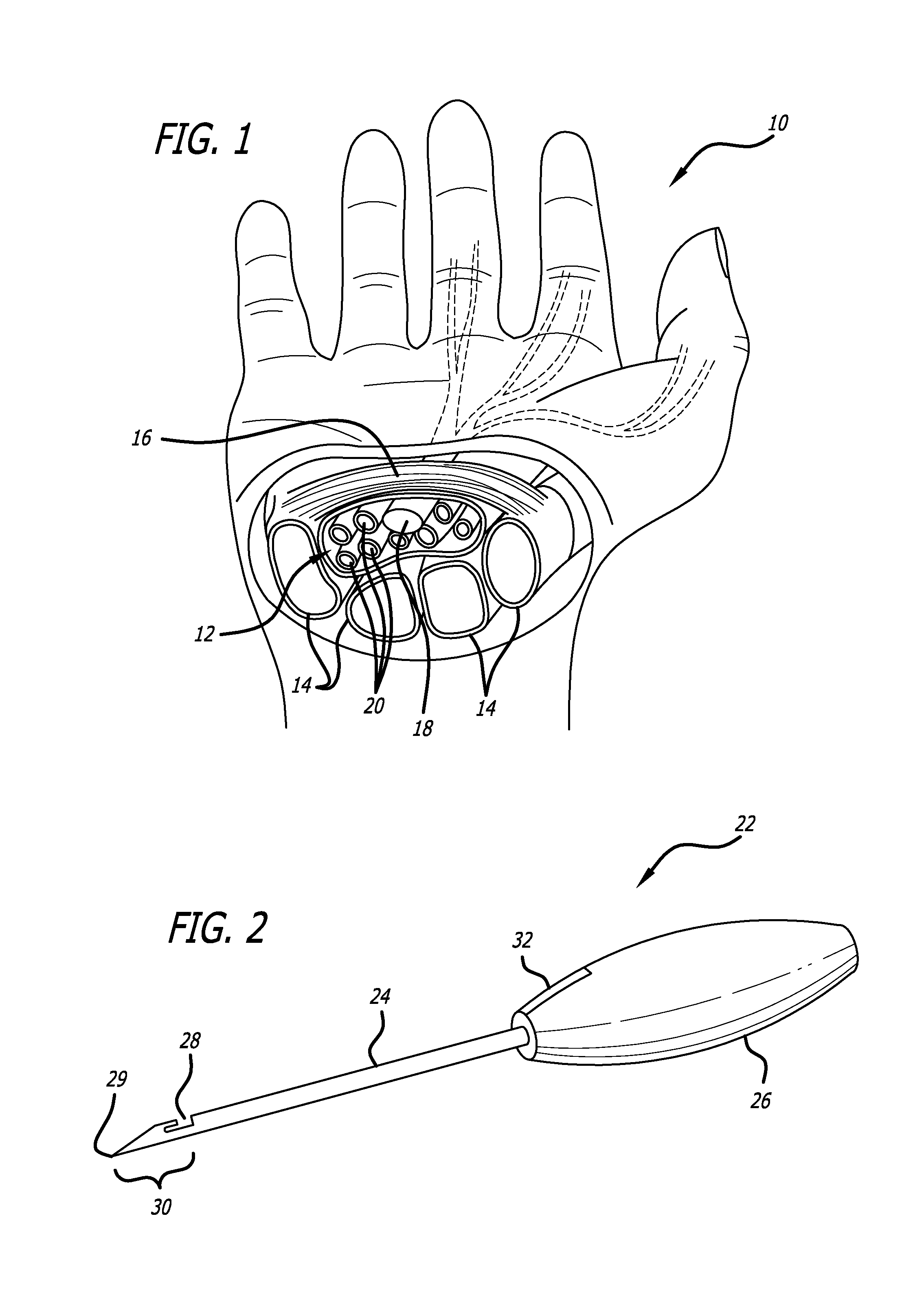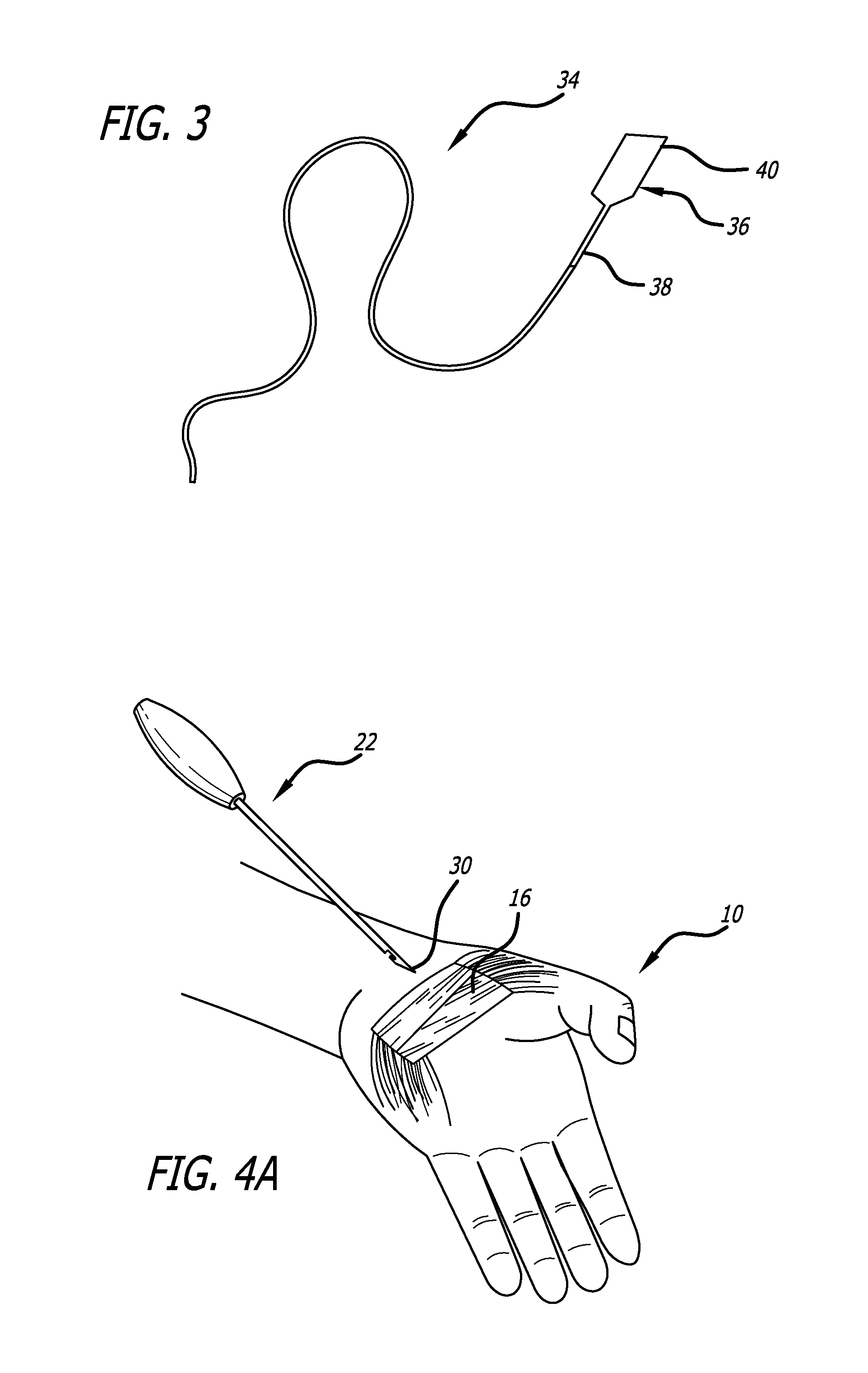Method and apparatus for thread transection of a ligament
a technology of thread transection and ligament, which is applied in the field of method and apparatus for thread transection of ligaments, can solve the problems of severe nerve damage, hand and wrist pain, severe nerve damage, etc., and achieve the effect of reducing the disruption of the surrounding tissue, easy and fas
- Summary
- Abstract
- Description
- Claims
- Application Information
AI Technical Summary
Benefits of technology
Problems solved by technology
Method used
Image
Examples
Embodiment Construction
[0031]The present invention provides for the minimally invasive transection of tissue and obviates the need for scalpels, saws or endoscopes. The invention is especially applicable for the transection of ligaments and most particularly, for the release of the transverse carpal ligament in the treatment of carpal tunnel syndrome.
[0032]FIG. 1 is a cross-sectional view of the carpal tunnel area of the hand 10. The carpal tunnel 12 is the area of the wrist and palm of the hand 10 formed by a U-shaped cluster of bones 14 that form a hard floor and two walls of the tunnel. The roof of the tunnel is formed by the transverse carpal ligament 16 which attaches to the wrist bones. Within the confines of the tunnel is the median nerve 18 and the flexor tendons 20 of the thumb and fingers. Carpal tunnel syndrome is caused by a compression of the median nerve by either a decrease in the size of the tunnel or an increase in the size of its contents. Such pressure may be relieved by a release of th...
PUM
 Login to View More
Login to View More Abstract
Description
Claims
Application Information
 Login to View More
Login to View More - R&D
- Intellectual Property
- Life Sciences
- Materials
- Tech Scout
- Unparalleled Data Quality
- Higher Quality Content
- 60% Fewer Hallucinations
Browse by: Latest US Patents, China's latest patents, Technical Efficacy Thesaurus, Application Domain, Technology Topic, Popular Technical Reports.
© 2025 PatSnap. All rights reserved.Legal|Privacy policy|Modern Slavery Act Transparency Statement|Sitemap|About US| Contact US: help@patsnap.com



